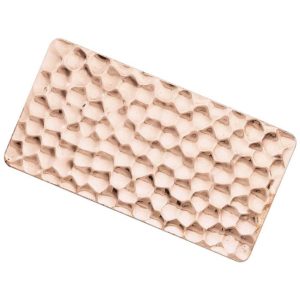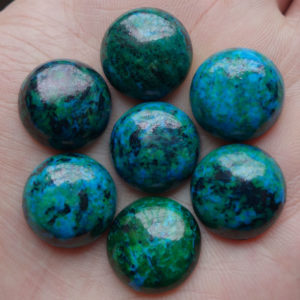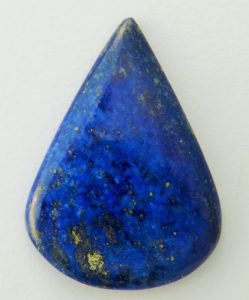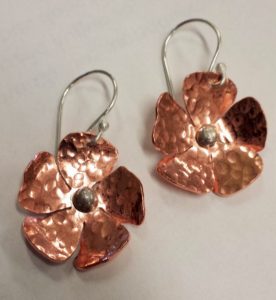
copper & sterling earrings and brass & sterling ring
COPPER and BRASS are wonderful alternative metals for jewellery making! The price of precious metals can be prohibitive for jewellery making, but equally important are the wonderful qualities of Copper and Brass (an alloy of copper and zinc). Copper has a soft temper and is easily textured and formed. Brass has a harder temper and can back up Copper with strength. Brass can also be annealed, making it easier to texture and form. Brass can also be used as embellishments in place of gold (but it does tarnish). 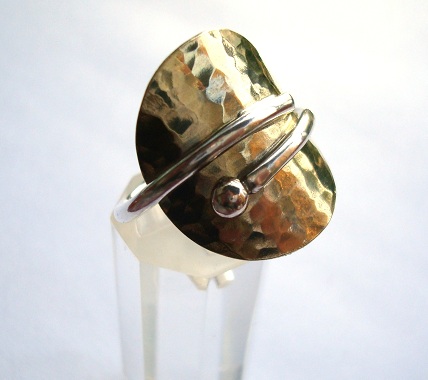
When Fall arrives, I always want to make and wear copper jewellery. I don’t know if it’s because it reminds me of the vibrant leaves, orange pumpkins or the harvest moon, but copper feels right at this time of year. It’s easy to work with and budget-friendly which also makes it an attractive choice for larger pieces. As if that weren’t enough, it develops a rich, deep patina over time that only adds to its beauty.
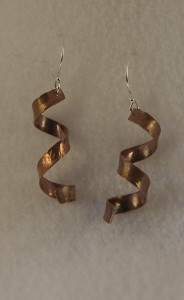
copper twirls
Copper was very well known to the ancients. It was first used around 8000 B.C. in its natural or native form. It was smelted from sulfide ores around 5000 B.C., cast in a mold around 4000 B.C. and alloyed with tin to create bronze around 3500 B.C. Today, copper is used in electrical wire, roofing and plumbing and in machinery. And of course, it is used in the decorative arts, such as jewellery.
Copper is also essential to all life here on earth and occurs naturally in many foods, including cacao, green olives and avocados to name a few of my favourites! It is second only to silver in electrical conductivity and is also biostatic, meaning that bacteria and other microorganisms can’t grow on it. Copper bracelets are often worn by people who have arthritis in an attempt to relieve aching joints, and some compression wear is manufactured with copper fibres in it! Is there anything copper can’t do?
Copper and Brass are produced in many different products, which are suitable for jewellery making. Sheet copper and brass are available in various gauges that can be used for pendants, earrings, bracelets and rings. You can get textured copper sheet in a variety of patterns, but I prefer to do a classic hammered texture on mine. Besides, when you’re ticked off about something, nothing feels better than repeatedly smashing a sheet of metal with a hammer! You can also purchase copper and brass wire in round, square, and patterned in a range of gauges for whatever project you may have in mind. To complete your projects, copper bezel, copper tubing and copper wire solder are also available. A tip from one of our many knowledgeable customers: when the copper solder flows, don’t take the flame off right away-leave it a bit longer and it will turn to the same nice bright copper colour as the rest of your piece. Copper is very soft and can be easily manipulated into any shape you want. As with any metal, it does work harden as you form it, so you may need to anneal it periodically. When you are finished, copper and brass can go into the tumbler for a final polish, which will also work harden them.
Just remember, tumbler first, then patina and lastly stone setting.
So, what can you do to copper to make it more interesting? Well, as mentioned previously, I enjoy giving it a good whack with a ball-peen hammer. However, like silver, you can create all kinds of textures with different hammers and tools. It can go through a rolling mill along with fabric, leaves, rolling plates, etc. to make some interesting textures. Try different patinas as well. A verdigris finish can be created using ammonia, salt and/or vinegar. There is a lot of information online about verdigris, but be careful if you’re using ammonia. Make sure you are working in a well ventilated area and wear protective equipment. Silver Black is great for giving emphasis to textured areas. Brush it onto the piece and then polish off the areas that you don’t want to be blackened. You can also use the flame from your torch to make multi-coloured patterns on copper as well. Or leave your copper plain and let it naturally develop a lovely patina. If you want to preserve the finish on your copper as it is, use Renaissance Wax to seal and protect it.

Copper with Verdigris Patina
Try mixing copper and brass with other metals, such as silver and brass for some interesting effects. Mixed metals are very popular right now and with good reason. You can produce a steampunk look, especially if you’re using cold connections. You can also sweat solder your metals in layers to create a 3-D effect piece. And of course, you can texture and patina these layers as well to create some spectacular multi-component pieces.
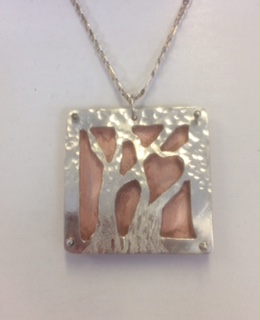
Sterling & Copper Pendant
You can also set stones in copper ( remember the copper bezel? ). There are a lot of stones that look spectacular with copper, such as turquoise, chrysacolla and malachite that actually get their colour from copper. Lapis is another stone that looks stunning with copper. Orange-coloured copper and deep blue lapis are opposite each other on the colour wheel which makes for a very dynamic effect. If you want to try something really different, pair copper with purple stones, such as amethyst and charoite. Copper also looks great with garnets and black stones, such as onyx. And of course, everything goes with clear quartz. Also try agates and jaspers for some wonderful, earthy looks.
So, bring some copper into your life and celebrate fall in all its vibrant beauty!

